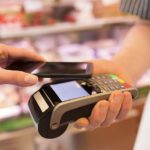According to Decision No. 2345/QD-NHNN of the State Bank of Vietnam, from July 1, 2024, customers of banks will be required to use facial biometric authentication when performing certain online transactions. This authentication method ensures transaction security for customers, preventing fraud and theft. So, what is biometric authentication for bank transfers, and how does it work? Let’s answer some common questions about biometric authentication for online transfers!
1 What is biometric authentication for bank transfers?
On December 28, 2023, the Governor of the State Bank of Vietnam issued Decision No. 2345/QD-NHNN (Decision 2345) on the implementation of safety and security measures for online and bank card payments, effective from July 1, 2024.
Essentially, the solutions stipulated in Decision No. 2345, or biometric authentication for bank transfers, involve verifying that the account holder’s information matches the information on the ID card with electronic chips (e-ID) issued by the Ministry of Public Security or the national database of citizens. This helps to eliminate fake, non-owner, and illegal accounts. As a result, financial institutions can accurately identify and verify customers during the payment process.
According to the State Bank, the purpose of issuing Decision 2345 is to ensure that online banking users are the actual account holders to protect customers and reduce fraud and theft of customer assets. It also helps prevent the rental, borrowing, and sale of payment accounts and e-wallets for illegal purposes.
 What is biometric authentication for bank transfers?
What is biometric authentication for bank transfers?
2 Which customers are required to use biometric authentication for bank transfers?
Biometric authentication for bank transfers applies to individual customers with electronic transactions exceeding VND 10 million or a total daily payment value exceeding VND 20 million.
Specifically, in the first case, from July 1, 2024, all banks and payment intermediaries must implement a unified policy for individual customers with transactions over VND 10 million or a total daily transaction value of over VND 20 million. This policy requires biometric verification (face) of the transaction performer, matching the account holder’s face stored in the national database of citizens or the e-ID issued by the Ministry of Public Security.
In the second case, before an individual customer performs a transaction for the first time using Mobile Banking or before performing a transaction on a different device than the one used for the last Mobile Banking transaction, they must re-authenticate their biometric identifiers.
 Which customers are required to use biometric authentication for bank transfers?
Which customers are required to use biometric authentication for bank transfers?
3 How to quickly perform biometric authentication for bank transfers
To perform biometric authentication for bank transfers, follow these steps:
The notification to update biometric data will be prominently displayed for easy visibility.
Tap on the notification to update your biometric data, and then proceed to scan your e-ID card.
Next, the bank will instruct you to place the chip side of your e-ID card or CCCD against the back of your phone to read the data via NFC.
If you haven’t enabled NFC on your phone, go to Settings > Connections > Enable NFC and contactless payments.
Now, simply hold the chip side of your e-ID or CCCD gently against the back of your phone for 5-10 seconds while the system reads and confirms your information.
 How to quickly perform biometric authentication for bank transfers
How to quickly perform biometric authentication for bank transfers
Below are detailed instructions on how to update your biometric data for some of the most popular banks in Vietnam, including Vietcombank, VP Bank, VietinBank, Techcombank, and MBBank:
How to perform biometric authentication for Vietcombank
 How to perform biometric authentication for Vietcombank
How to perform biometric authentication for Vietcombank
How to perform biometric authentication for Techcombank
Here, you will see the option to “Update Information for e-ID with Chip.” If your phone doesn’t support NFC, tap on “Go to Settings” to enable this feature.
 How to perform biometric authentication for Techcombank
How to perform biometric authentication for Techcombank
How to perform biometric authentication for VietinBank
 How to perform biometric authentication for VietinBank
How to perform biometric authentication for VietinBank
How to perform biometric authentication for VP Bank
 How to perform biometric authentication for VP Bank
How to perform biometric authentication for VP Bank
How to perform biometric authentication for ACB
 How to perform biometric authentication for ACB
How to perform biometric authentication for ACB
4 Frequently Asked Questions about Biometric Authentication for Bank Transfers
Why is my biometric authentication for bank transfers unsuccessful?
There are several reasons why you may be unable to update your biometric data for your bank account. Some common issues include:
Your phone doesn’t support NFC.
Older phone models may not support NFC and, therefore, cannot read the data from the e-ID card with a chip. For iOS devices, NFC is supported on iPhone 7 series and newer, as well as iPhone SE 2020 and newer.
In this case, you can borrow a friend or family member’s phone to update your data at home or visit a bank branch to update it manually.
Incorrect placement of the e-ID card with a chip.
This is the main reason why NFC scanning fails on iPhones or why NFC scanning of the e-ID on Android phones is reported as invalid.
Typically, the correct position for scanning the e-ID card with a chip is on the back of the phone, near the camera or the logo of the phone manufacturer. However, each phone model may have a different NFC location, so if the banking app indicates a mismatch, try moving the position of your phone gently.
The e-ID card with a chip is not placed on a flat surface.
To scan NFC quickly and conveniently, it is recommended to place the e-ID card with a chip on any flat surface (such as a desk or the floor) and then place your phone on top to read the card’s information.
Do not hold the e-ID card and the phone in your hand while scanning, as this may cause shaking and disrupt the data reading process.
The phone case has not been removed.
If your phone has a case, try removing it before scanning with NFC, as the case may interfere with the chip’s detection.
The e-ID card is placed in the wrong orientation.
Placing the e-ID card in the wrong orientation is a common reason why many people fail to scan NFC on their phones. The correct orientation is to have the back of the e-ID card (the side with the chip) facing the back of the phone.
 Why is my biometric authentication for bank transfers unsuccessful?
Why is my biometric authentication for bank transfers unsuccessful?
What should I do if I haven’t updated my biometric data by July 1?
After July 1, customers who have not updated their biometric data should continue to visit their bank branch for assistance for transactions over VND 10 million or a total daily transaction value of over VND 20 million.
 What should I do if I haven’t updated my biometric data by July 1?
What should I do if I haven’t updated my biometric data by July 1?
What should I do if I don’t have an e-ID card with a chip or use a phone that doesn’t support NFC?
For customers who do not have an e-ID card with a chip or have a valid ID card under the law, are foreigners, or use a phone that does not support NFC, to perform online transactions over VND 10 million, they only need to register their biometric data once at a bank branch. After that, they can perform transactions through Mobile Banking/Internet Banking without visiting the branch.
In the future, when the Ministry of Public Security provides electronic identification and authentication services, banks will integrate Mobile Banking/Internet Banking applications with the electronic identification and authentication system to allow customers to register their biometric data through the electronic identification account provided by the Ministry of Public Security.
 What should I do if I don’t have an e-ID card with a chip or use a phone that doesn’t support NFC?
What should I do if I don’t have an e-ID card with a chip or use a phone that doesn’t support NFC?
The above
Explore 12 Amazing Destinations for Biking Trips
Unlock Vietnam in a brand new way with an exciting biking tour! Discover the stunning beauty of the country with Dien May XANH’s top 12 must-see destinations. From sweeping plains to clear blue beaches and mountainous vistas – experience all the sights with your own personal cycling tour. Find your ideal route and set out for an adventure today!






































